Rugby's 'greatest' try stands up well to modern analysis
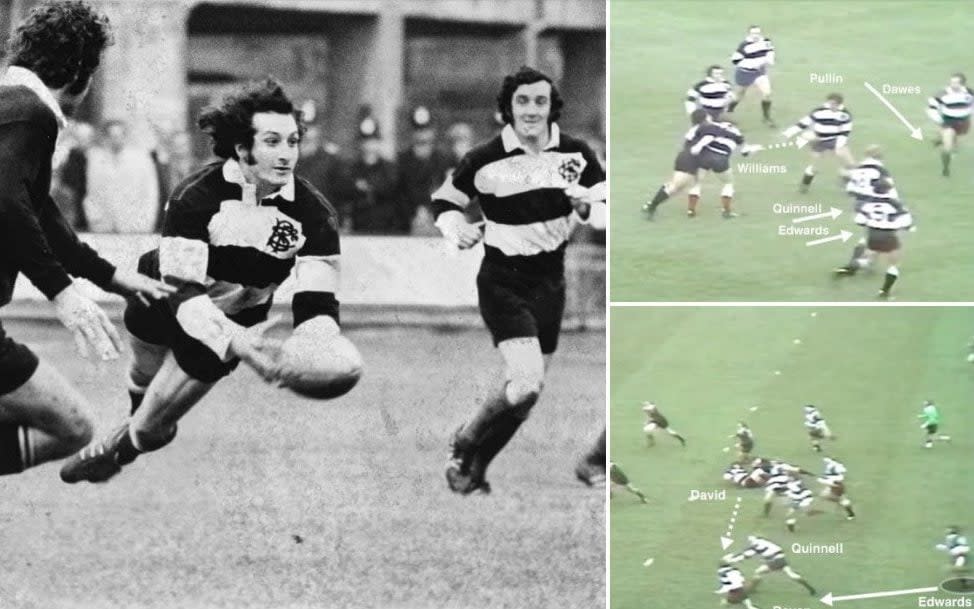
Under the sensibilities of today, Gareth Edwards would not have had a chance to surge onto Derek Quinnell’s one-handed pass and complete what has become for many the greatest try in the history of rugby union.
Instead, by the time of their scrum-half’s explosive finish on January 27, 1973, the Barbarians might have been standing over a penalty and sizing up a kick into the corner to launch a lineout drive. That is if the officials had surveyed enough replays to determine whether Ron Urlich, the New Zealand hooker, deserved a yellow or a red card for his high tackle on JPR Williams.
Hypotheticals are futile, of course. Kiwis will justifiably point out that Quinnell could have been collared for flipping the ball forward into the path of Edwards. Comparing across eras feels unnecessary, too, because, even 50 years later, there is so much to enjoy. A flurry of Phil Bennett side-steps, two offloads, John Dawes’ dummy – a great dummy – and flowing support play all set up a fabulous team try capped off by an icon of the sport.
The moment is particularly special to me because my father was at Cardiff Arms Park that day as a fan. Most footage is grainy, but excitement is palpable in the swells of noise that are more poignant when I think about how captivated he must have been. Indirectly, through my dad, that era – and players like Edwards and Bennett – inspired my love of rugby union.
Taking it in today, the Barbarians’ 23-11 victory seems scruffy, yet interspersed with brilliance. JPR Williams’ second-half try, sparked by a mazy run from David Duckham, is beautiful. Before half-time, Dawes finds himself on the end of another remarkable counter that is ruled out after Fergus Slattery’s overhead, quarterback-style pass is deemed to have travelled forward.
Back to Edwards’ try. Watch it all through first:
The opening exchanges of this match offer proof that kick-tennis is not a modern evil. From Bennett’s kick-off, a maul forms and New Zealand are awarded a scrum by referee Georges Domercq. Ian Hurst, the All Blacks centre, strikes from his own 22 down the middle of the pitch, with JPR Williams swooping and returning the favour. His opposite number, Joe Karam, covers well and clears up the touchline.
There follows a sequence that resembles the modern game as Duckham gathers and the Barbarians move the ball to find space in New Zealand’s back-field. Dawes retreats to make himself available for a pass, linking with Duckham to feed Mike Gibson. A left-footed clip causes Sid Going to retreat and boot into touch, surrendering a lineout to the Barbarians in a dangerous position:
Now, lineouts were more of a lottery – and therefore less valuable as an attacking platform – before the advent of lifting in 1999 and the sequence leading to Edwards’ try begins with New Zealand pinching one against the throw as Bob Wilkinson spills.
Going clears, with his right foot this time…
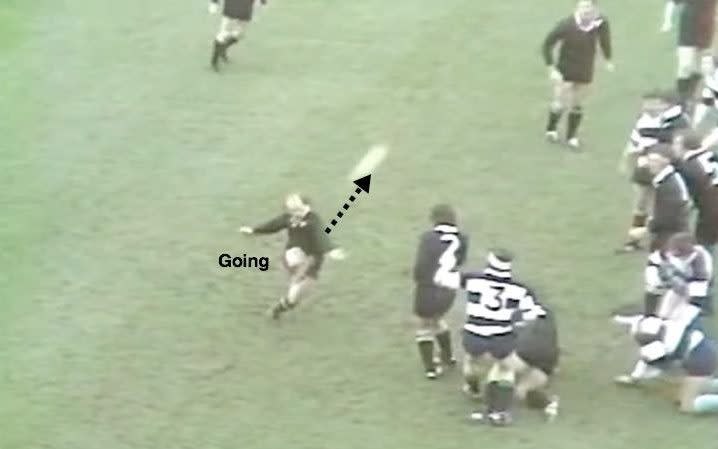
…and JPR Williams covers again. Watch how John Bevan, the Barbarians left wing, arcs in-field and offers himself. Williams thinks about a pass in that direction before holding onto the ball and probing ahead as Peter Whiting, the New Zealand lock, closes down Bevan.
Here comes the high tackle from Urlich on Williams:
We need a higher-definition picture to determine the point of impact, but the perpetrator would have been in trouble:
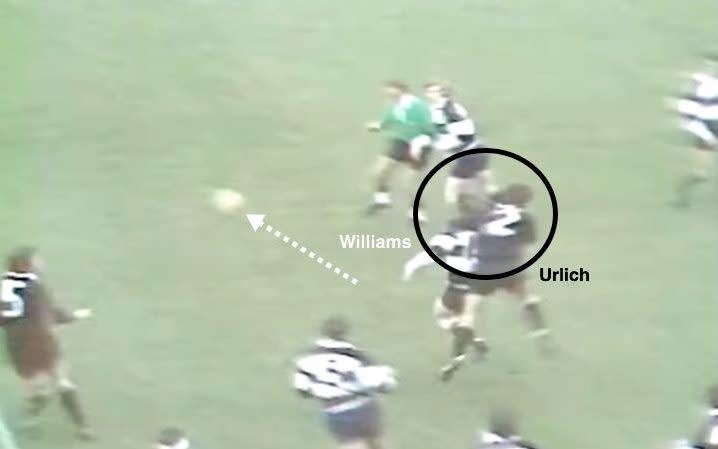
As it happens, Going scampers from the back-field…

…and gets caught in a ruck, which Ian Kirkpatrick identifies. New Zealand’s captain steps up and scrum-half and finds Bryan Williams, his right wing:

Williams kicks ahead:

Edwards’ dynamism at the end of this passage is so startling that it is useful to track him throughout. We get a brief glimpse here, as he, Bennett, loosehead prop Ray McLoughlin and JPR Williams track back:
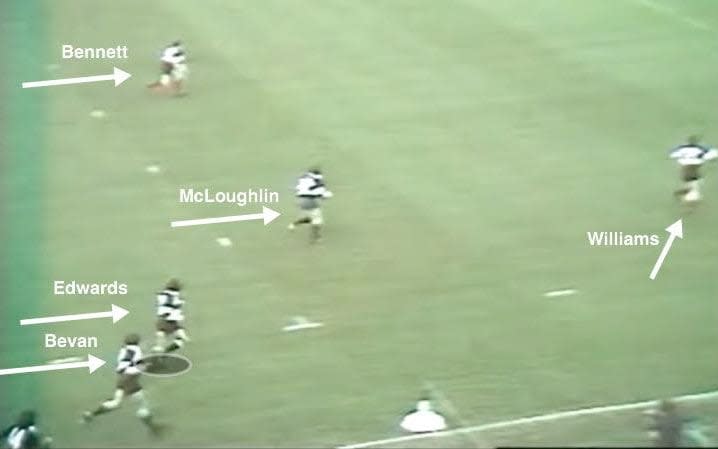
Bennett cannot reach the ball on the full and has to scamper in pursuit as it skips towards the Barbarians try-line, but that does not matter. He scoops off his laces and curves away from Alistair Scown, bouncing off his right foot to evade Hurst and then in the same direction to beat Hamish Macdonald:
The third jink is the most devastating. Bennett’s whole body is held as though he will now head to the left of Kirkpatrick, the defender opposite him:
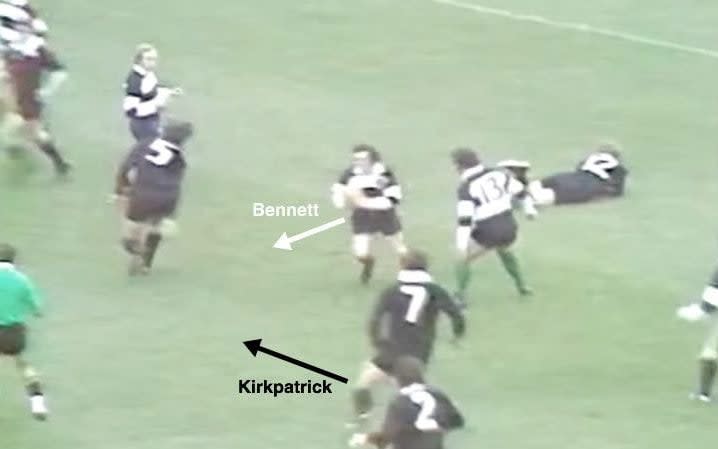
Instead, the fly-half darts into another change of direction before fixing Urlich and linking with JPR Williams:
It is reminiscent of Liam Williams’ intrepid run in 2017, which foreshadowed Sean O’Brien’s phenomenal try for the British and Irish Lions at Eden Park – only without the subtle obstruction from Ben Te’o:
Returning again to 1973 and rewinding just slightly, note the position of John Pullin as Bennett releases his pass:

The hooker circles around Williams to receive an offload and keep the counter going:
Yes, the point of contact of Bryan Williams’ challenge on JPR is pretty high, too:
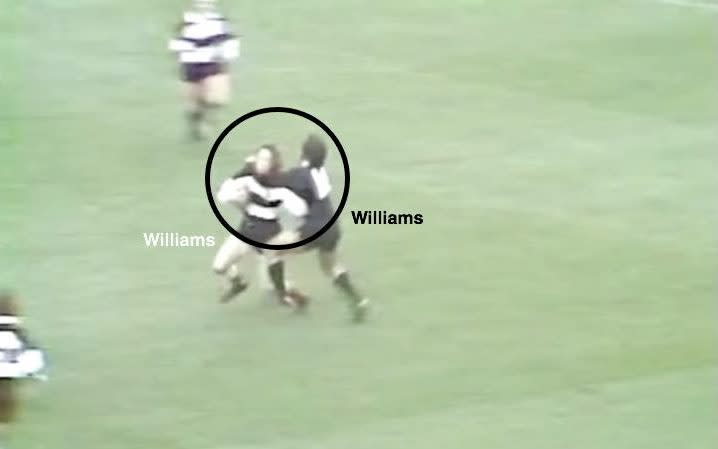
As JPR lifts the ball to Pullin, Dawes swings around and Quinnell and Edwards, the last two men to touch the ball a few moments later, come into shot:
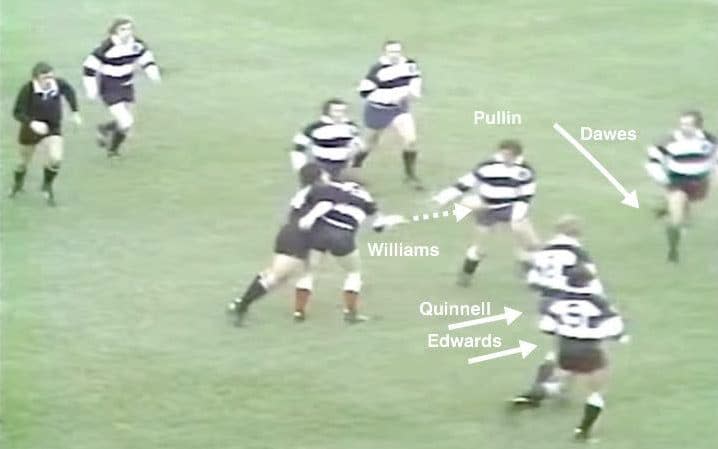
Dawes maintains the impetus. He shows the ball to his outside, where Bevan is lurking, to confound drifting defenders before turning to his inside and locating Tom David. In later life, Dawes would self-deprecatingly suggest that the lyrical commentary of Cliff Morgan – “John Dawes, great dummy” – was the only thing that marked this cool, unfussy action as a dummy:
It is worth highlighting Graham Whiting, New Zealand’s loosehead prop, here. With the Barbarians flooding forward, he covers athletically…

…and makes a fine tackle on David. However, a one-handed offload to Quinnell, which may have attracted the attention of a modern-day television match official, continues the attack:
At this stage, Edwards accelerates into shot:
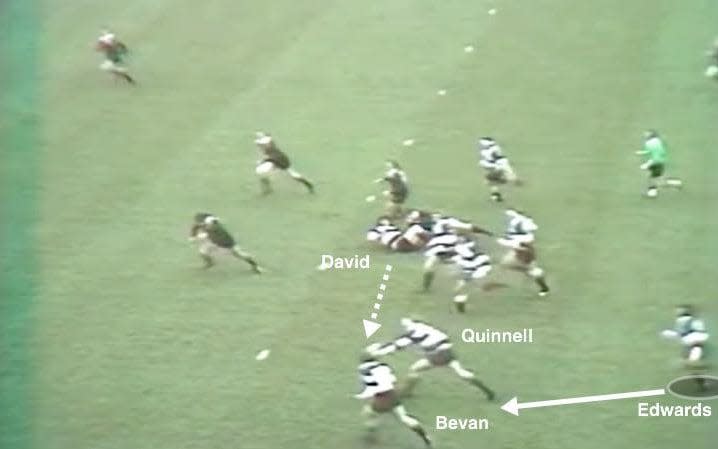
He scythes onto the left shoulder of Quinnell, receiving a pass that definitely would have attracted the attention of a modern-day television match official, and outstrips Karam. That fellow Edwards has the pace, just, to hold off a covering Grant Batty:
The timing of his run is the mark of his sharp intuition, and is evocative of another talented scrum-half playing today. Watch this Toulouse try against Sale Sharks from last month, and remember than Antoine Dupont throws a pass away from the first ruck:
Anticipation, speed, poise and teamwork; some traits are as valuable now as they were half a century ago.

 Yahoo Movies
Yahoo Movies 
